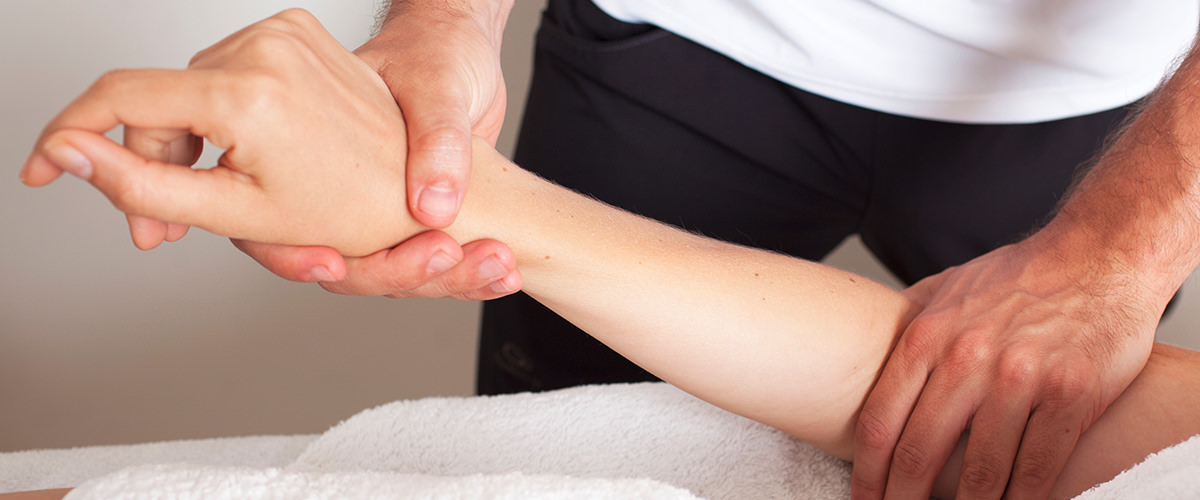Osteopathy, a form of manual therapy that listens to the body
Do you suffer from joint pain, headaches or digestive problems? Are you pregnant or looking for post-natal care? Osteopathy, a holistic approach based on careful palpation of the body, could be the answer to your questions.

What is osteopathy?
Osteopathy was founded in the XIXᵉ century by Doctor Andrew Taylor Still, a physician and surgeon originally from Kansas (USA). He spent his life studying the link between health and human anatomy.
According to the World Health Organisation (WHO), “osteopathy relies on using manual contact for diagnosis and treatment. It respects the relationship of body, mind and spirit in health and disease. It lays emphasis on the structural and functional integrity of the body and the body’s intrinsic tendency for self-healing.”
It is therefore a preventive and curative manual therapy based on careful palpation of the body. Unlike other approaches, it considers the human being as a whole.
Osteopaths use a number of techniques – cranial, articular, visceral and facial – to improve mobility and posture and relieve pain. Osteopathy aims to treat the cause, not the symptoms. It is a genuine therapy that listens to the body.
“An osteopath is only a human engineer, who should understand all the laws governing his engine and thereby master disease.”
Andrew Taylor Still
How osteopathy works
The aim of this manual therapy is to restore balance to the body’s various structures, such as muscles, organs, ligaments and joints. It is based on 4 fundamental principles.
The unity of the human body
The human body is a whole entity made up of bones, joints, muscles, membranes, innervations and blood supply. All these biological elements are interconnected. If one of them doesn’t work properly, the whole body suffers the consequences. This is why osteopaths treat the origin of pain.
Structure governs function
The human body is a unit made up of different structures that are in constant contact with each other. If one of them is affected in its mobility, the role it should be playing is disrupted, resulting in a functional disorder. For example, poor mobility in the ankle caused by a sprain makes it difficult to walk.
The role of arteries is vital
Blood flow eliminates toxins and helps cells receive the nutrients they need. This is known as homeostasis, or the body’s ability to self-regulate.
Good blood flow ensures that the body functions efficiently. Osteopaths take care to encourage their patients’ blood to circulate freely by restoring mobility to affected structures.
The principle of self-healing
The body has the ability to self-regulate and heal itself. The accumulation of psychological and physical trauma can alter this ability, causing the body to malfunction and leading to the onset of pain. The osteopath’s role is to rebalance the body so that it can start to heal itself again.

Reasons for seeking osteopathic treatment
There are many reasons for consulting an osteopath and they correspond to different types of disorders.
Acute and chronic conditions:
- neck pain (migraines, torticollis, neuralgia);
- lower back pain (lumbago, sciatica, herniated discs);
- back pain (intercostal neuralgia);
- joint pain (sprains, blockages).
Digestive and visceral conditions:
- digestive disorders (constipation, diarrhoea, bloating);
- gastro-oesophageal reflux;
- pelvic pain (pain during menstruation, disrupted cycle, menopause).
Cranial conditions:
- chronic rhinitis and sinusitis;
- chronic otitis;
- ENT disorders.
Paediatric conditions:
- plagiocephaly;
- regurgitation;
- sleep disorders;
- chronic ENT disorders;
- sucking disorders;
- growth disorders;
- scoliosis, etc.
Do you need professional advice to identify your pain? Wondering what osteopathy is? Make an appointment now.
Osteopathy, a manual therapy for the whole family
Osteopathy is a mild form of treatment that is suitable for everyone: infants, children, adults, pregnant women and the elderly. In the event of an accident or following surgery, it is advisable to seek medical advice before starting treatment.
Each patient’s treatment is personalised according to their age and their body’s responses.
The osteopath has a dual role.
- Preventive: without significant pain, it is possible to consult an osteopath in order to assess potential blockages and dysfunctions. These recommendations are particularly useful for athletes and women in the post-natal period.
- Curative: the osteopath relieves chronic trauma or can intervene in an emergency at home for functional pain.